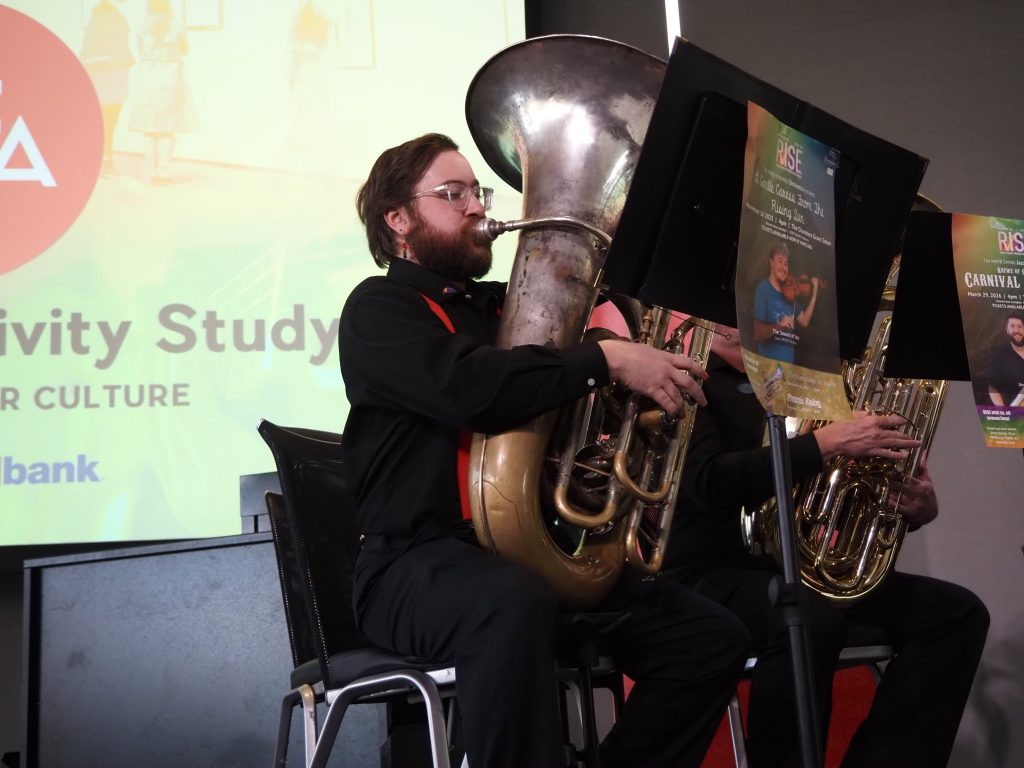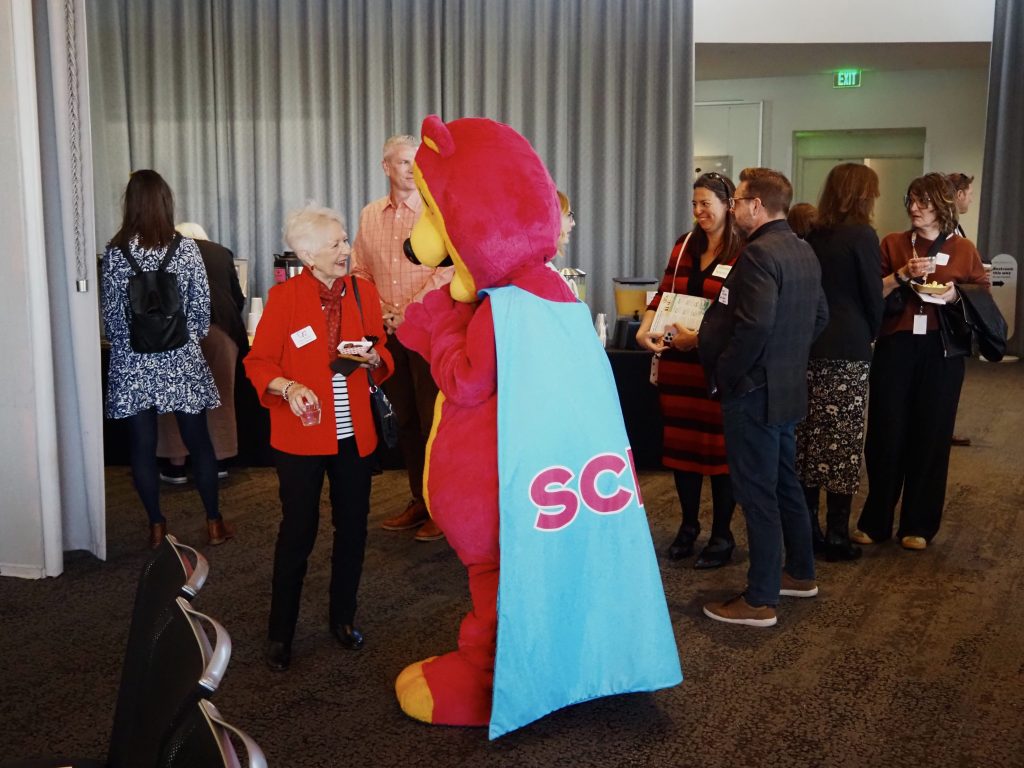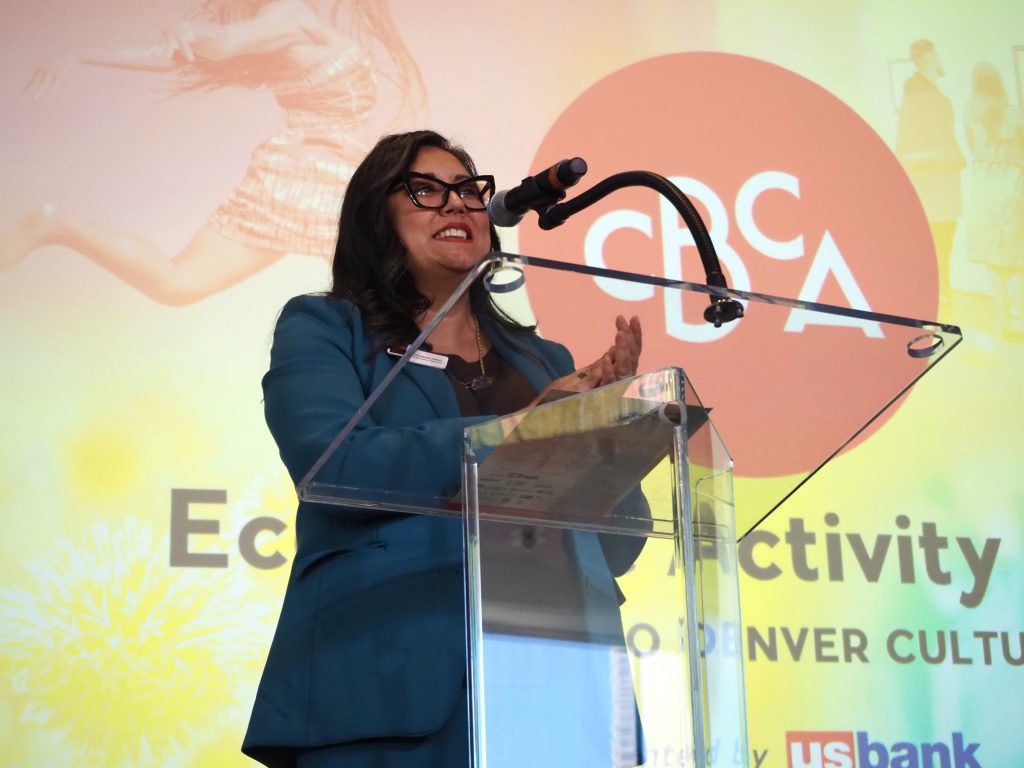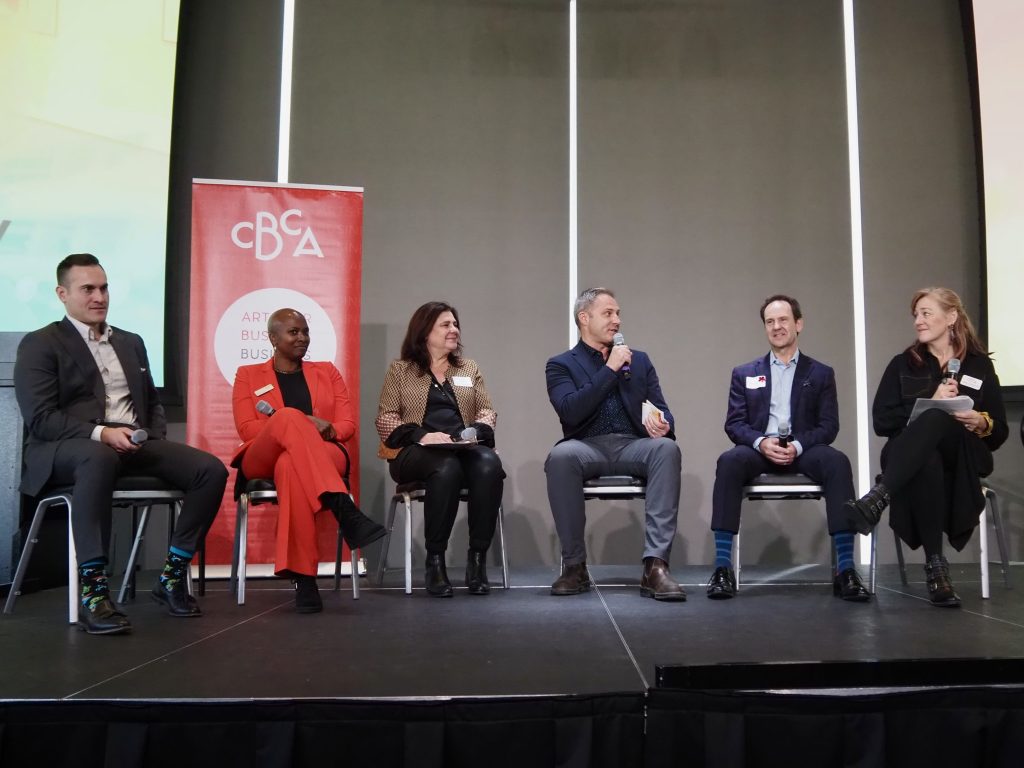
Kristen Fiore

Audio By Carbonatix
Rockies, Broncos, Nuggets, Avalanche and Rapids games had a combined attendance of 4.9 million in 2024, according to data compiled by BBC Research & Consulting for this year’s Colorado Business Committee for the Arts economic activity study. “That is a third of our cultural attendance,” CBCA deputy director Meredith Badler told the capacity crowd at the November 6 CBCA Economic Activity Study meeting at the Denver Art Museum.
That’s right: According to the data, arts and cultural experiences logged 14.52 million in-person attendance numbers in 2024, a 12.5 percent increase from 2022, but a 5 percent decrease from 2019.
And yet, arts and cultural economic activity as a whole was up 36 percent from 2019, with attendance, jobs, tourism, giving and educational experiences raking in $3.12 billion for Colorado’s economy in 2024. Cultural tourism was the highest economic driver, contributing $692 million to that total.

Kristen Fiore
Will you step up to support Westword this year?
At Westword, we’re small and scrappy — and we make the most of every dollar from our supporters. Right now, we’re $22,000 away from reaching our December 31 goal of $50,000. If you’ve ever learned something new, stayed informed, or felt more connected because of Westword, now’s the time to give back.
“For Visit Denver, arts and culture is critical,” said Flavia Light, Visit Denver’s vice president and chief tourism development officer, during a panel discussion at the event led by CBCA executive director Christin Crampton Day. “Arts and culture is one of our key pillars when we are advertising to visitors to come to our city and to our region. If a visitor comes because they want to visit the Denver Art Museum or any gallery or festival that we have, you see that ripple effect. They stay in our hotels, they go to our restaurants. They spend money here.”
She added that Denver offers the unique combination of urban creativity and outdoor adventure — tourists may come to Denver to go to the mountains and ski, but they explore the city for its plethora of museums, festivals and other cultural experiences.
“And yet, our own population, as well as around the country, doesn’t yet know what an arts mecca Colorado is,” said Colorado Theatre Guild president and Local Theater Company co-artistic director Betty Hart, another speaker on the panel.

Kristen Fiore
And they need to figure it out, because arts funding is down from 2022, according to the data. Badler said this is mostly because there was a 90 percent decrease in funding from federal grants in 2024 — the federal funding awarded to arts organizations early in the pandemic to keep them going had gone away. But the 2024 data doesn’t even account for the millions of federal dollars Colorado arts and humanities organizations lost earlier this year when the National Endowment for the Arts and the National Endowment for the Humanities rescinded most of their grants around the country as the agencies were ordered to redirect their focus under the Trump administration.
The Scientific and Cultural Facilities District (SCFD) continues to be the biggest monetary supporter of Colorado’s arts ecosystem, contributing $85 million in 2024. SCFD, approved by voters in 1988, is a regional tax that gives one penny from every $10 purchase back to cultural institutions across the seven counties of Denver, Boulder, Jefferson, Adams, Arapahoe, Douglas and Broomfield.
New SCFD executive director Andrea Albo spoke at the end of the event, reminding the audience that SCFD reauthorization would be back on the ballot in 2028. “There’s a lot of work that has to happen between now and then, and it starts with people and connecting,” Albo said. “We have to listen, learn and lead. As we do that, we’ll keep pace with the paradigm that is shifting.”

Kristen Fiore
And post-2020, the paradigm is definitely shifting when it comes to attendance and behaviors, according to panelist Nathan Richie, who is the director of the Golden History Museum & Park. Richie recalls a saying in the industry that arts and cultural organizations aren’t really in competition with each other, but with other leisure activities like skiing. “Now, I actually think we’re more in competition with the couch,” he said.
“One of the things that’s happening nationally that Colorado’s just beginning to [realize] is that Saturday afternoon is the new Friday night,” added Hart. “More tickets are sold for a Saturday afternoon matinee, for a Sunday matinee, than for your evenings. It’s a big change from 2019. We as arts and business leaders have to think about how we reach people where they are.”

Kristen Fiore
Hart also noted that while some Colorado arts and culture groups are doing well, she has seen a lot of longtime organizations close recently, which should be a cause for concern. “Without federal and state support, and without our business sector, there is no way that all of us as individuals will be able to continue to bolster our arts community,” she said. “Although we’re doing well, we still have a ways to go.”
She shared a maxim from her Nana: “Give me my flowers while I’m still here.”
Concluded Hart: “That’s the message I would say to individual donors, to corporations, to funders and to the government. We have to invest in our arts institutions while they’re here. We don’t want to hear that another amazing organization is gone because we didn’t contribute when we could have.”
Read the full CBCA Economic Activity Study for 2024 here.